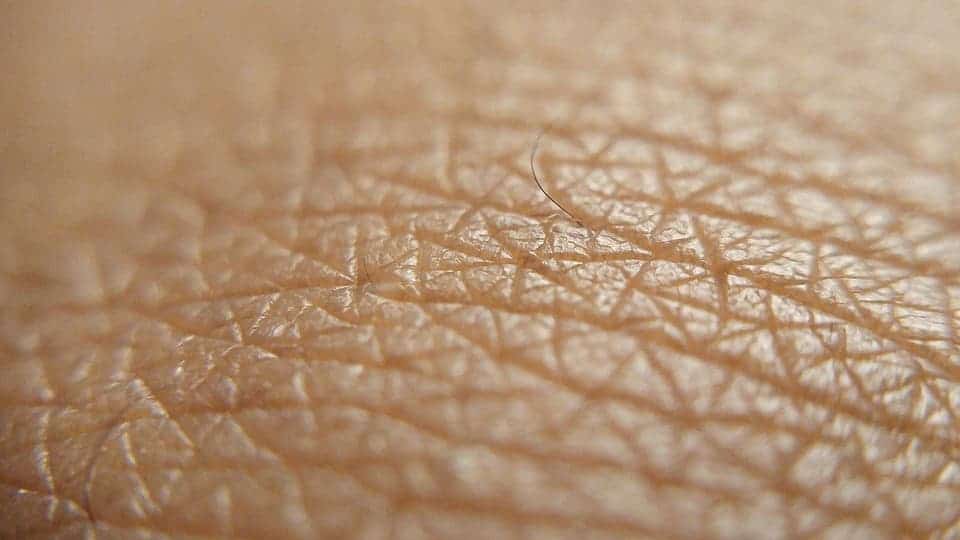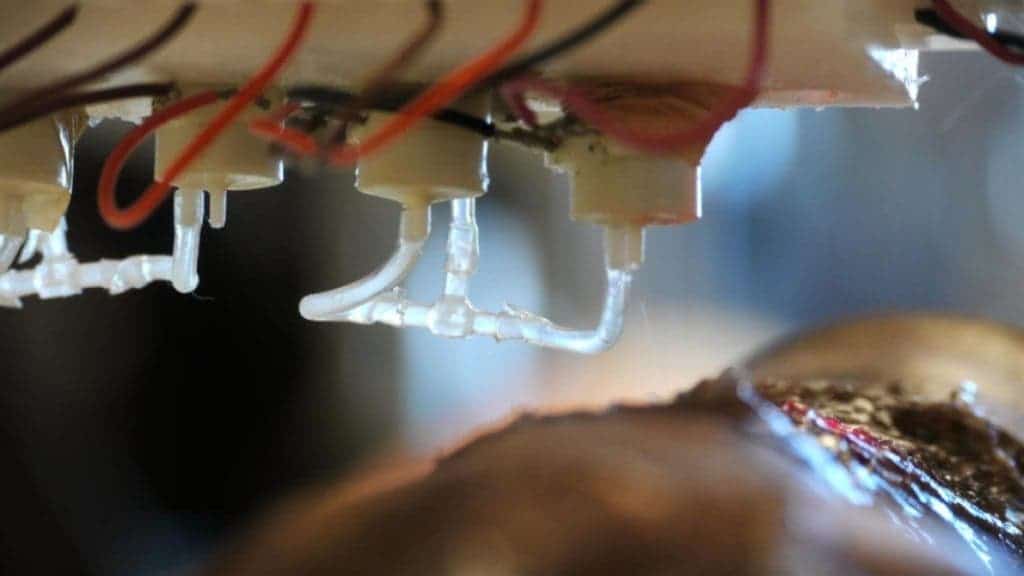A novel bioprinter aims to make skin grafts a thing of the past — by printing skin directly onto wounds using a patient’s own skin.

Skin-deep wounds may not sound as dangerous as much as annoying, but make no mistake: they can be debilitating. Chronic, particularly large or non-healing wounds, such as diabetic pressure ulcers, affect millions across the world. They are also very costly, as they require multiple rounds of treatment, and they can be agonizing. If that wasn’t enough, burn injuries behave in largely the same way.
Enter the Skinprinter
Researchers at the Wake Forest Institute for Regenerative Medicine (WFIRM) have developed a mobile bioprinting system that can print skin directly into a wound. The printer (the first of its kind ever developed) is supplied with the patient’s cells, rolled to their bedside, and applies successive layers of (bi-layered) skin to jump-start the healing process.
“The unique aspect of this technology is the mobility of the system and the ability to provide on-site management of extensive wounds by scanning and measuring them in order to deposit the cells directly where they are needed to create skin,” said Sean Murphy, Ph.D., an assistant professor at WFIRM and the study’s lead author.
The team reports that the major building blocks of skin — dermal fibroblasts and epidermal keratinocytes — can easily be isolated from a sample of the patient’s uninjured tissue, and cultured to provide the raw ‘ink’. Fibroblasts are cells that synthesize the extracellular matrix and collagen (basically the skin’s structural supports) while keratinocytes are the predominant cells of the epidermis. Both types of cells play an important role in wound healing.
The ink is made up of these cells and a hydrogel substrate. A certain device embedded into the printer scans the wound, and this data is then crunched to guide the printing process. The printer can deliver a different mix of cells at any point, allowing it to simulate the layered structure of the skin. This helps accelerate the growth and formation of normal skin structure and functions, according to the team. As a proof-of-concept of the system, the team printed skin directly onto pre-clinical models.

Image credits WFIRM.
It’s quite an exciting system. The current go-to method for treating large skin wounds are grafts, but they can often be challenging to stretch over the whole wound. Living human skin also comes in quite a limited supply, as you might imagine. Donors are an option, but those grafts run the risk of being rejected by the host. With the WFIRM bioprinter system, the researchers report seeing new skin forming outward from the center of the wound — this only happened when the patient’s own cells were used, because the tissues were not rejected.
The team says their next step is to conduct clinical, human trials.
“The technology has the potential to eliminate the need for painful skin grafts that cause further disfigurement for patients suffering from large wounds or burns,” said WFIRM Director Anthony Atala, M.D., and a co-author of the paper. “A mobile bioprinter that can provide on-site management of extensive wounds could help to accelerate the delivery of care and decrease costs for patients.”
“If you deliver the patient’s own cells, they do actively contribute to wound healing by organizing up front to start the healing process much faster,” said James Yoo, M.D., Ph. D, who led the research team and co-authored the paper. “While there are other types of wound healing products available to treat wounds and help them close, those products don’t actually contribute directly to the creation of skin.”
The paper “In Situ Bioprinting of Autologous Skin Cells Accelerates Wound Healing of Extensive Excisional Full-Thickness Wounds” has been published in the journal Scientific Reports.


